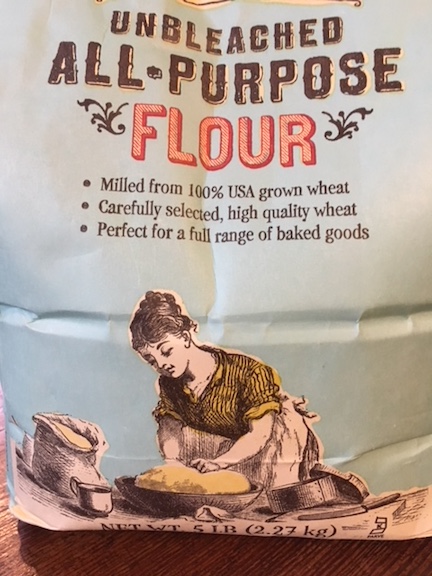My eight year old granddaughter was full of excitement the other day because she had made bread (from scratch) at school that day. Yay and blessings for teachers who take time to do the important things in life, like teach children to make bread! I asked Ellie what kind of bread they had made and she said, “Wheat. But it was white.”

I understand her confusion. We so often use the word “wheat” when we mean whole wheat – or brown vs. white bread. But of course (almost) all bread is made from flour, which is made from wheat and how lucky we are that this miraculous plant is part of our world.
Wild wheat originated in the “Fertile Crescent” (the area of present day Syria and Turkey). It has been cultivated since Paleolithic times and has had a part of the history of mankind since its beginning. Today there are many different kinds of wheat, including winter, spring, red, hard, soft and white.

The short solution to Ellie’s confusion is this: Whole wheat flour is a product that uses the entire seed of the wheat plant – the bran (outside covering), germ (the part that sprouts to make a new plant) and the endosperm (the largest part of the seed.) The result is flour that is brown and makes a denser bread, more nutritious bread.

White flour is made from only the endosperm and has virtually no nutritive value. Many manufacturers use chemicals to bleach the flour so that it is uniformly white, making white flour even less nutritious. A slightly better alternative is unbleached white flour.
There are many, many other different kinds of flours, including durum which is a hard wheat high in protein and semolina, a kind of durum used in making pasta.

By now Ellie has completely lost interest in my explanations and is ready to do something. So we decided to use our (my) newfound knowledge of wheat and make some pasta!
We combined semolina, eggs, water, baking powder and salt to make the dough and then the fun began! Making the world’s longest, most delicious spaghetti noodles. Making it was almost as fun as eating it.

Try it! It’s not only fun to make your own pasta, it’s also absolutely delicious. It helps to have a pasta maker on a stand mixer but you can roll and cut it without it. I’ve included the recipe below. Have fun!
Basic Egg Noodle Pasta
4 large eggs
2 1/2 cups semolina
1 cup unbleached all purpose flour
3 tablespoons water
1 teaspoon salt
Break eggs into a measuring cup. Place flour and salt into large bowl and gradually add eggs. Add water until the dough all sticks together, then knead for two minutes either by hand or in a mixer. Let the dough rest for 20 minutes then divide into four balls. Attach the pasta roller to the mixer and press through the widest setting (or roll out as flat as possible by hand). Send it through the roller several times, getting progressively thinner. Take off the roller and put the noodle cutter on the machine and feed the thin sheets through one at a time (or cut long, thing noodles by hand). Make them as long or short as possible but we found that the longer the noodle, the more fun it was. Just don’t try to slurp a 36 inch noodle, you’ll turn your cheeks inside out!
